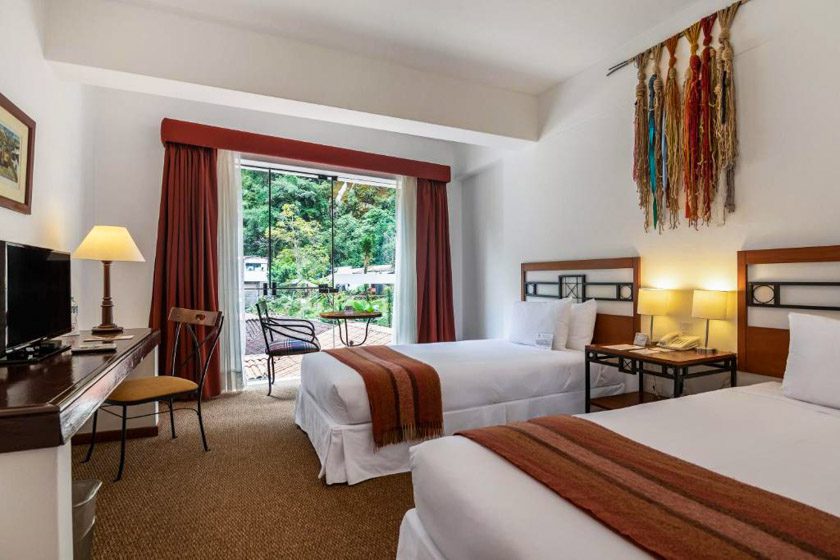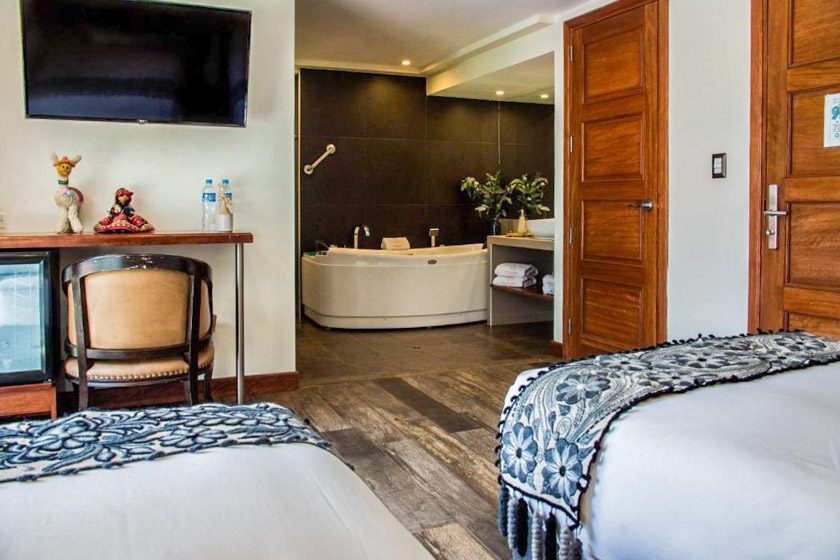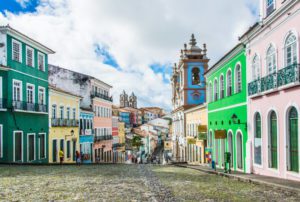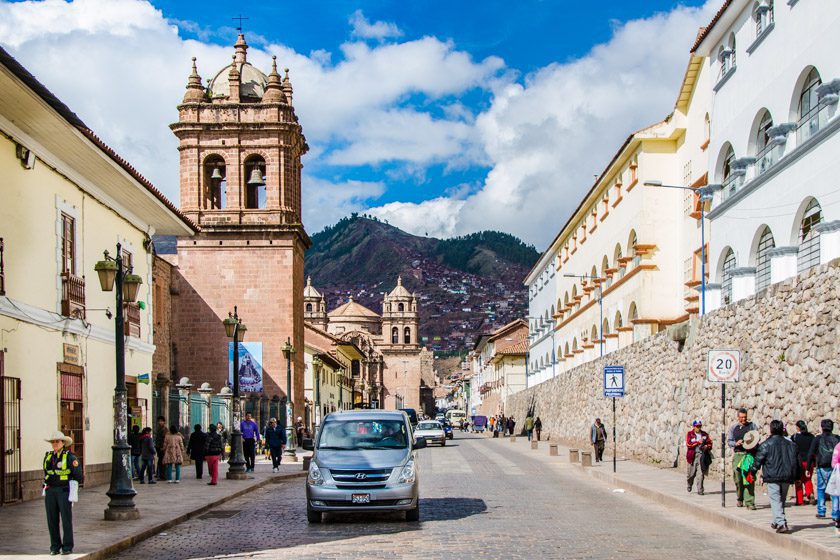Machu Picchu is one of the 7 wonders of the world and the number one UNESCO World Heritage attraction in Peru. A well-prepared travel plan will help a traveler make the most out of their time at the iconic Incan archaeological site in Machu Picchu. 80% of the annual visitors to Machu Picchu are day trippers. Still, if you can afford an overnight stay in Aguas Calientes, do it. Staying over will allow you not only a night’s rest but also the opportunity of making a second visit at sunrise before the tourists crowd in. Beating the crowds is by far the best way to experience the park, so plan to get in there before the gates open at 5 am. As hard as heeding that 4:30 am wake-up call will be, seeing the sunrise over Machu Picchu promises to stand out as one of the most spiritual moments of your life.
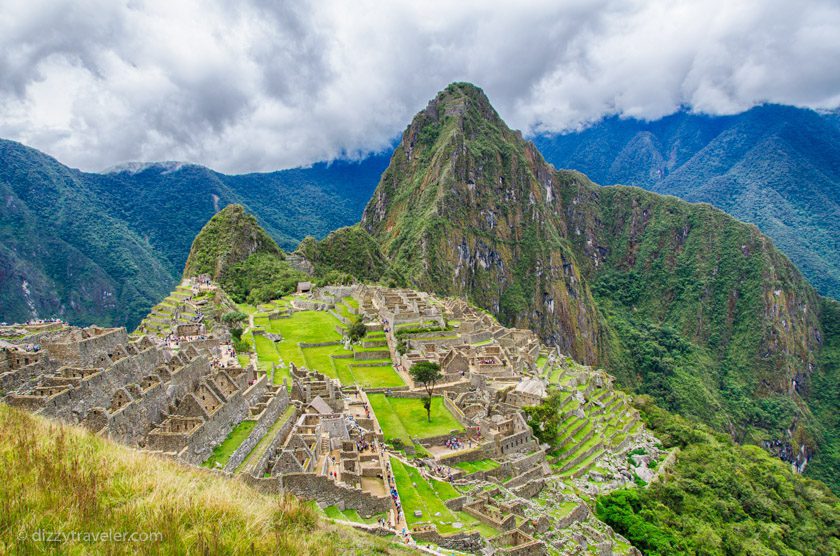
Best Time To Visit There
October through April is the official rainy season, but that does not prevent many travelers from visiting the UNESCO site. Machu Picchu is open year-round, and peak season is July and August; you should always expect crowds during this period. Sundays can be the most crowded because that’s when people who live in the Cusco province are allowed into the site for free, in addition to the daily quota of 5,200 paying visitors. We went in the month of November, and it was perfectly all right for us.
How to Get There
When Hiram Brigham discovered Machu Picchu in 1811, it was not easily accessible. Over the years, certainly, situations improved. But still, you need to spend a considerable amount of time just to get there. First, you have to get to Lima (the Capital of Peru), then Cusco (an important city of Peru), then a little over 3 hours of a train journey to Aguas Calientes, a small town close to Machu Picchu ruins, and finally another 20 minutes by minibus to the stunning UNESCO site. If you are already in Peru or another city other than Lima or Cusco, you must be in Cusco first since Machu Picchu is connected to Cusco only. For more details, visit my blog on the Cusco to Machu Picchu trip.
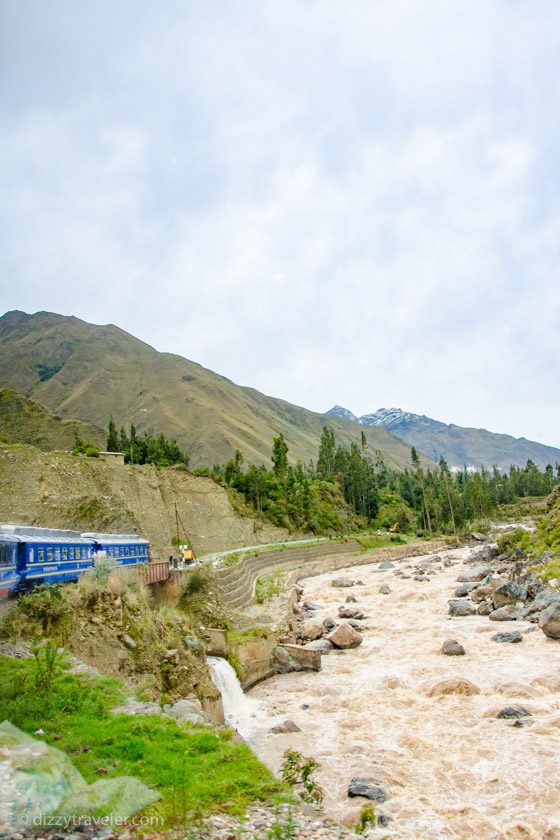
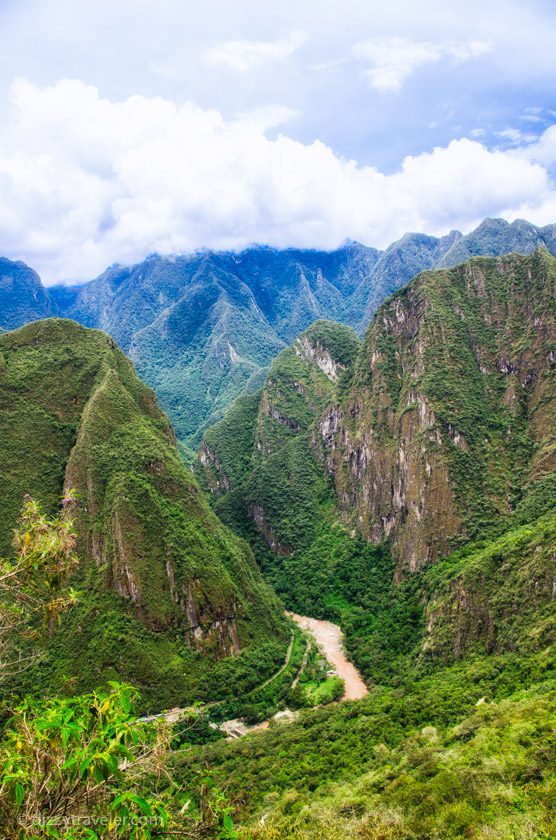
The distance of Machu Picchu from other Cities
| From City | Distance to Cusco | Distance between Cusco – Machu Picchu | Total Distance |
|---|---|---|---|
| Lima | 1165 km (725 miles) | 112 km (70 miles) | 1277 km (795 miles) |
| Arequipa | 625 km (390 miles) | 112 km (70 miles) | 637 km (395 miles) |
| Puno | 390 km (240 miles) | 112 km (70 miles) | 502 km (311 miles) |
We bought our entry ticket online and a guided tour from Cusco, so we did not have to worry about it at the entrance. If you take a self-guided tour, don’t forget to buy your ticket at the Machu Picchu Cultural Center in Aguas Calientes; otherwise, you must return to Aguas Calientes because they don’t sell entrance tickets at the entrance. Access to Machu Picchu is open to everybody all year round, but now it is limited to 2500 people per day for Machu Picchu and 400 people per day, in two groups, for Wayna Picchu.
Entry Ticket
| Inca City of Machu Picchu | Inca City of Machu Picchu + Montaña Machu Picchu | Inca City of Machu Picchu + Wayna Picchu | |
|---|---|---|---|
| Overseas adult | S 142.00 / US$ 41.50 | S 152.00 / US$ 44.50 | |
| National adult | S 64.00 / US$ 18.50 | S 80.00 / US$ 23.50 | S 90.00 / US$ 26.50 |
| Overseas student* | S 65.00 / US$ 19.00 | S 72.00 / US$ 20.00 | S 77.00 / US$ 22.50 |
| National student* | S 32.00 / US$ 9.00 | S 40.00 / US$ 11.50 | S 45.00 / US$ 13.25 |
Machu Picchu is one of the most photographed sites, and I am sure you have seen plenty of pictures of the ancient ruins already—so many structures of interest. Once you reach that place, guides will explain every single structure. But they go fast, and when you reach there, you remain so absorbed, it is really difficult to concentrate on what somebody is saying ( I was there to see something, enjoy and take nice shots, not let the precious time go by like that). But the truth is afterward; you may repent this and not return here again. So my suggestion – research about those structures before you reach there. So once you look at them, you know what they are, what shot to take, and from what angle.
The Temple of the Sun
The semi-circular Temple of the Sun displays some of the finest stonework found in Machu Picchu and would have served as the citadel’s civic center where only the most important events were held. Within the temple stands the tower known as Torreon, which marks the city’s highest altitude – the Incas believed that being closer to the sun would help them contemplate heaven more easily – and may have been used as an observatory.
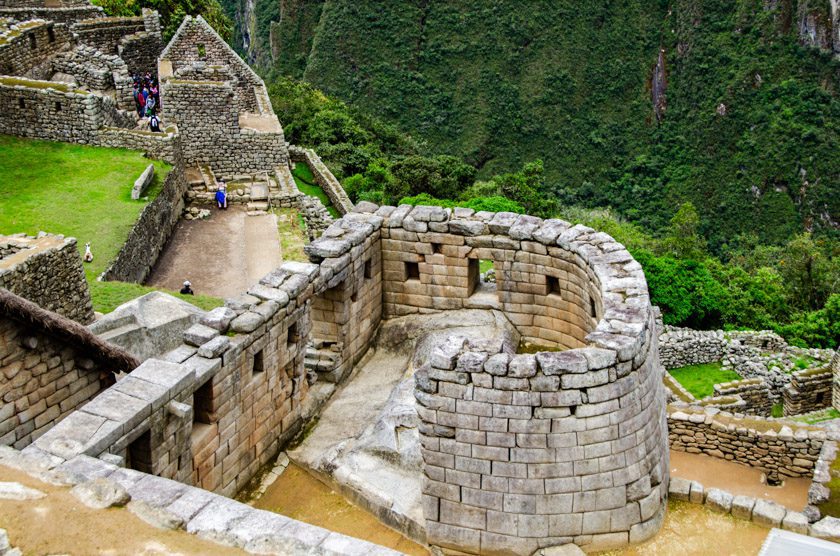
Did you know that Machu Picchu had more than 150 buildings ranging from houses and schools to temples and sanctuaries?
Things To See In Machu Picchu
Intihuatana
Set on slopes in a pyramidal shape, the Intihuatana ritual stone is a fascinating carved rock designed to point directly at the sun during the winter solstice so that at two points during the year, the sun casts no shadow. Known as the ‘hitching post of the sun,’ the Incas believed that Intihuatana held the sun in position as it followed an annual path around the globe. Built on a rise overlooking the Sacred Plaza, its location allows for impressive views over the Rio Urubamba and out to Huayna Picchu (Wayna Picchu), the iconic peak towers above the Machu Picchu ruins and appears in the classic image of the site.
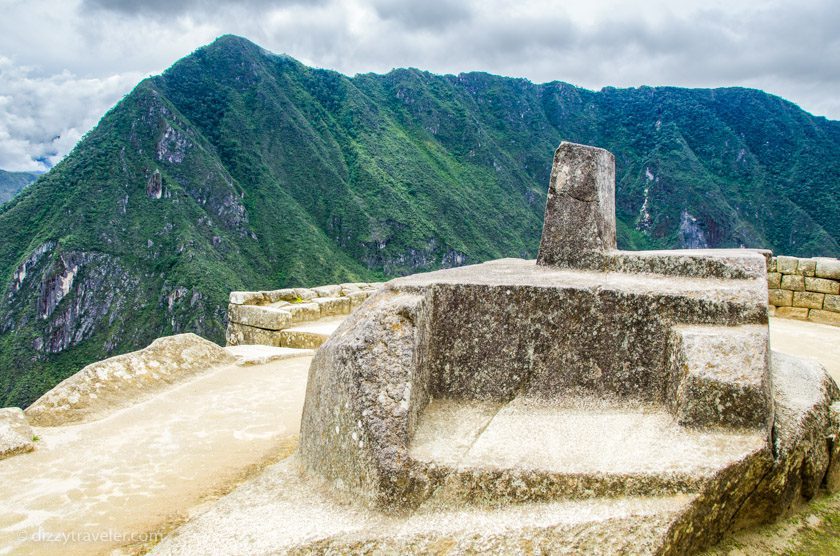
The Temple of the Three Windows.
The four-sided Sacred Plaza is perhaps the most beautiful area within the Machu Picchu complex and would have functioned as its political center. Surrounding the plaza are some of Machu Picchu’s most important buildings, including the attractive Three-Windowed Temple (El Templo de Tres Ventana) and Principal Temple, which displays high walls and fine stonework. The site also contains three large and mysterious stones believed to have been used as altars.
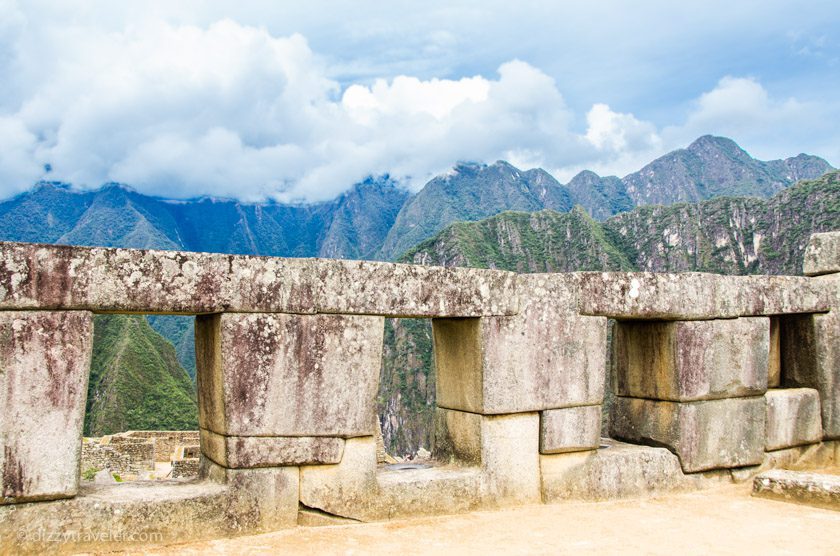
Agricultural Terraces
The 700-plus ancient terraces at Machu Picchu preserved soil, promoted agriculture, and served as part of an extensive water distribution system that conserved water and limited erosion on the steep slopes.
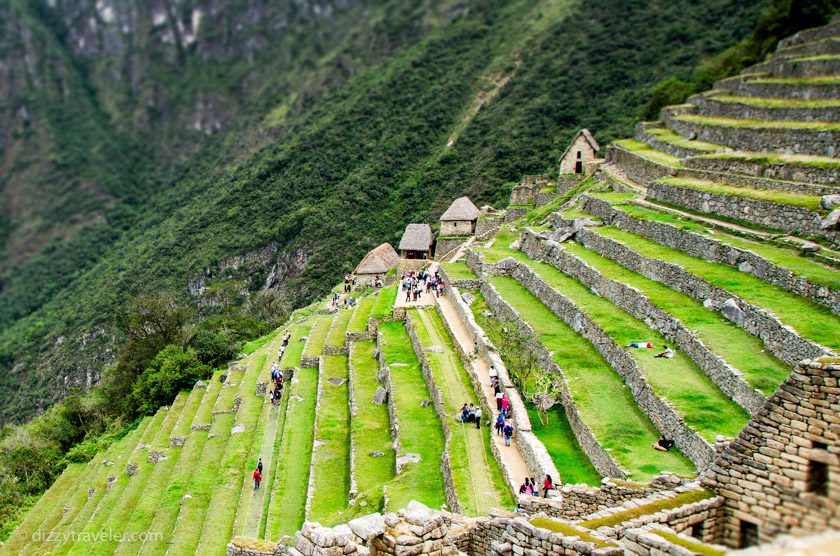
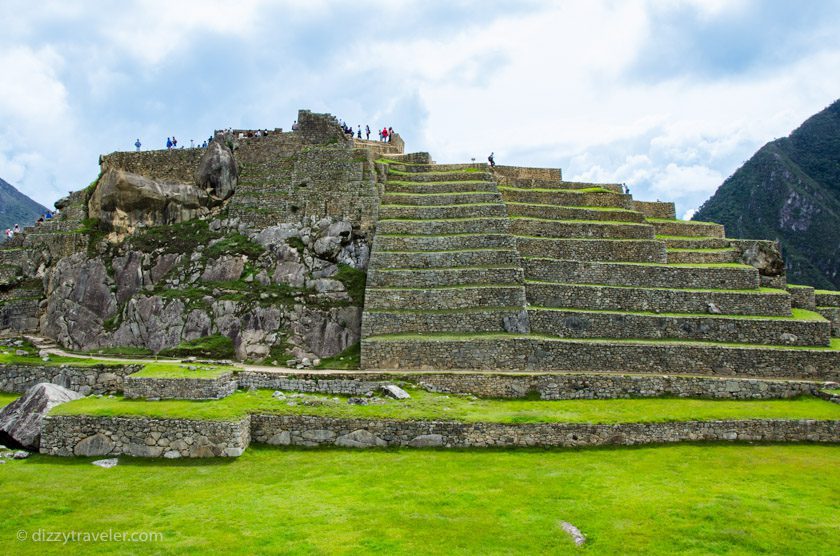
Ancient Architects
Landscape engineering at Machu Picchu displays the lifestyle and strong skills of the Inca civilization. The site’s buildings, walls, terraces, and ramps reclaim the steep mountainous terrain and make the city blend naturally into the rock escarpments on which it is situated.
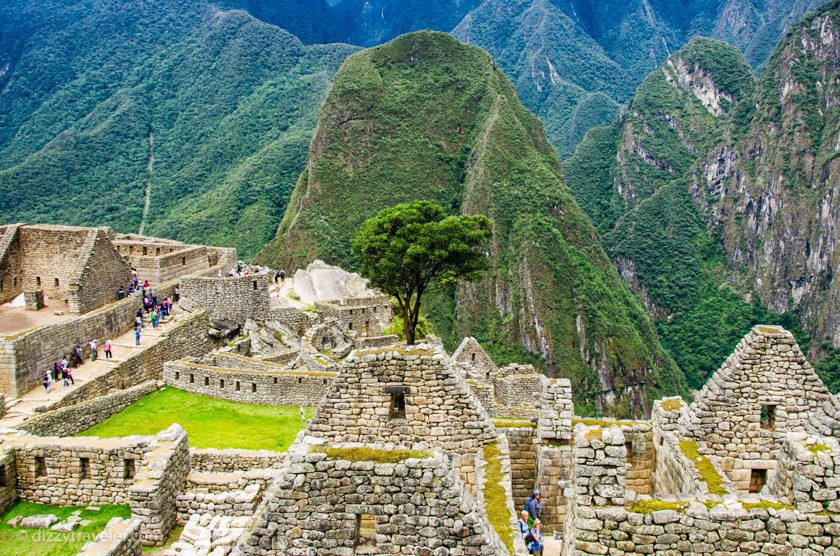
The Sacred Rock
The Sacred Rock is located near the access point to Huayna Picchu from the Sacred Plaza. This large granite monolith looks more like a wall than anything else; however, upon closer observation, many feel that the outline of the Sacred Rock is shaped like the Inca’s sacred mountain, Putukusi. Other than this fact, little is known about what the rock was used for. I do know that many tourists like to take pictures against the rock. I had to wait some time before taking a tourist-free shot of the rock.
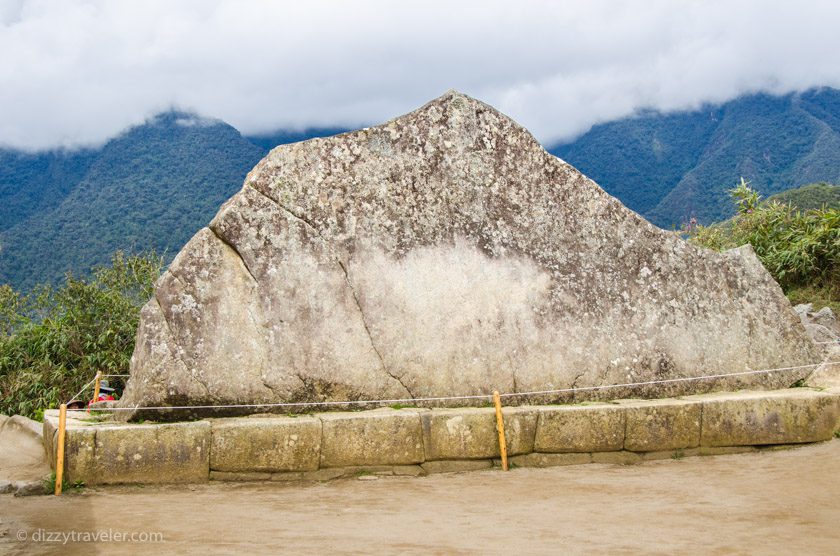
The Sun Gage
Further uphill from the Temple of the Sun, a track leads to Intipunku, also known as the Sun Gate, where the Inca Trail enters Machu Picchu and affords stunning views across the whole site.
Wayna Picchu
Wayna Picchu or Huayna Picchu is a mountain in Machu Picchu around which the Urubamba River bends. The peak of Wayna Picchu is about 2,720 meters (8,920 ft) above sea level, or about 360 meters (1,180 ft) higher than Machu Picchu. According to local guides, the top of the mountain was the residence of the high priest and the local virgins.
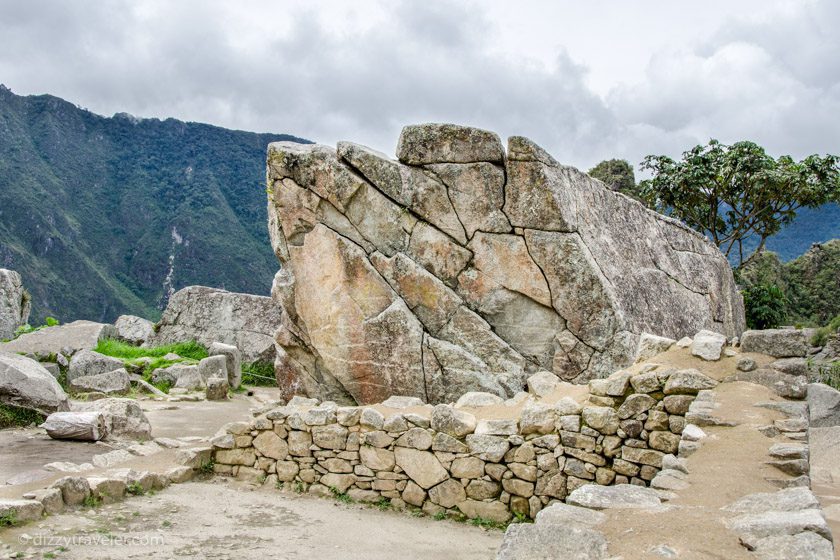
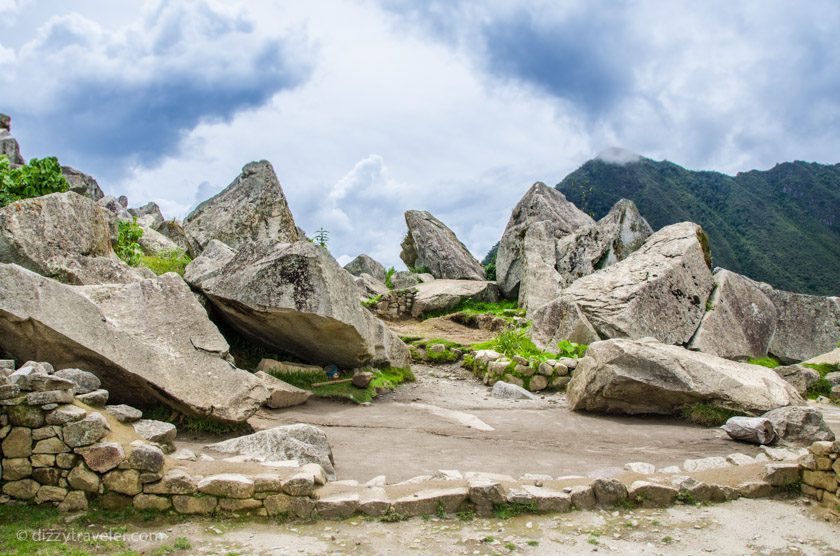
You’ll need a separate ticket to climb this peak at the site, and you need to book in advance—there are a limited number of tickets (400 per day). The panoramic view of Machu Picchu looking down on a clear day is awesome but be aware that some sections of this strenuous trail are very narrow and steep. You’ll have the choice of starting your climb at 7 am or 10 am. Go at 10 am; there’s a better chance any clouds will have lifted by then.
Machu Picchu Mountain
Machu Picchu Mountain is the most spectacular yet one of the most overlooked optional treks available at Machu Picchu. Located in the south-west of Machu Picchu citadel and towering 3,080 meters (10,111 feet) above sea level, the mountain trek offers unparalleled views of the famous Inca sanctuary and panoramic views vistas of the surrounding mountain scenery. At its summit, Inca priests once performed rituals on special dates as well as liturgical greetings to the Salkantay Apu. Of course, you’ll need a separate ticket to climb up – and definitely good knees.
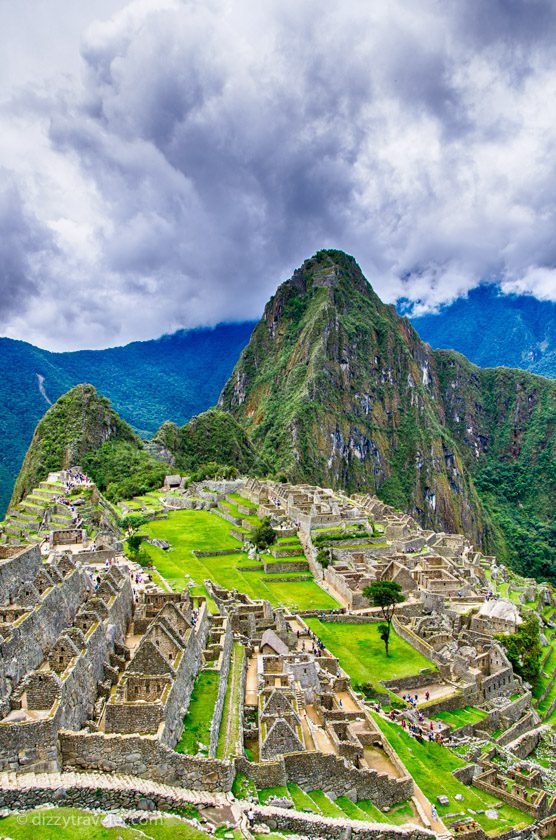
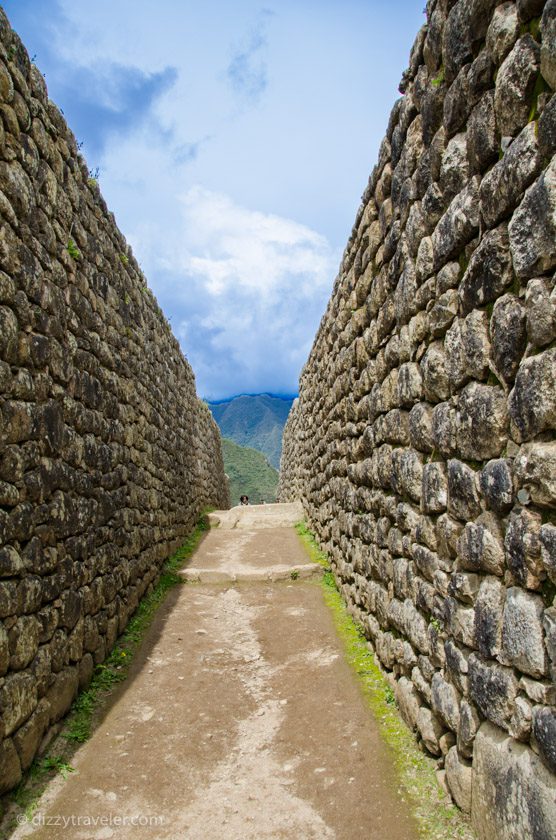
General Information
- Machu Picchu means Old Mountain, taking its name from the location of the Incan Citadel
- According to historians, the architectural complex was built in the 15th century, approximately, by the Inca Pechacutec.
- Its exact location is in the Machu Picchu district, province of Urubamba, 70 miles northeast of the city of Cusco.
- Machu Picchu was linked to the entire Inca Empire via the Qhapaq Nan, the famous roads of the Incas.
- Temperature range from a low of 43º F to a high of 70º F.
- The Citadel is divided into two areas: the agricultural area consisting of the terraces and the urban section serving administrative purposes.
- The average altitude of the citadel is 8047 feet above sea level.
- The mountains of Wayna Picchu and Machu Picchu are perfect for taking panoramic photos of the entire architectural complex.
Useful Tips
Bring water and a rain jacket, even if it looks like a beautiful sunny day. Sun is pretty intense at that altitude, so wear a hat and use plenty of high-SPF sunscreens. Bring insect repellent as well. It is good to keep someone’s soles coins in your pocket. You’ll need them to access the bathroom at the entrance to the site. You’ll have to exit the gates to use the bathroom or grab food, so bring your passport and retain your ticket. You’ll need to show both to re-enter the citadel.
Book Your Sightseeing Trip
There are a lot of beautiful places to visit and some exciting sightseeing activities to bring unforgettable memories back home. Please click on our below affiliate link to see your options.

